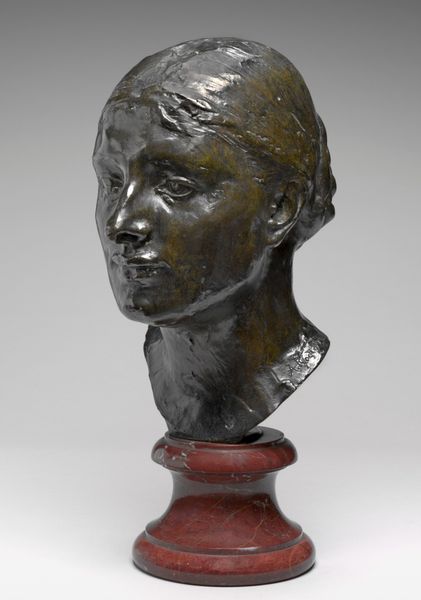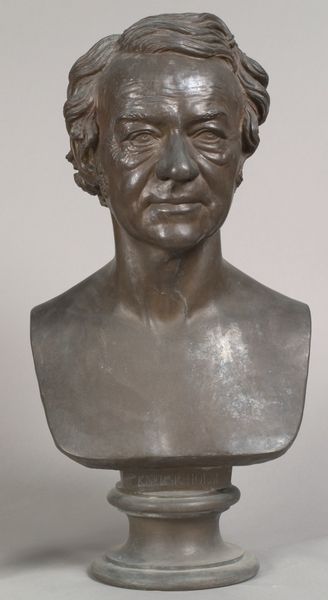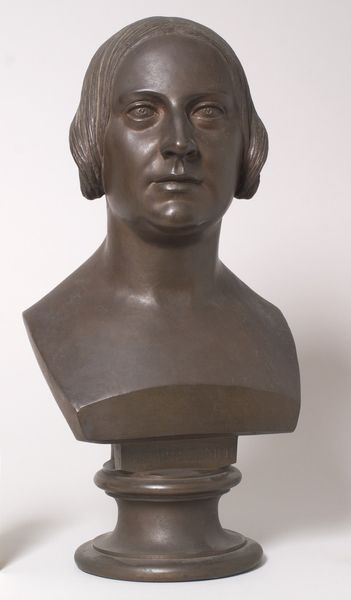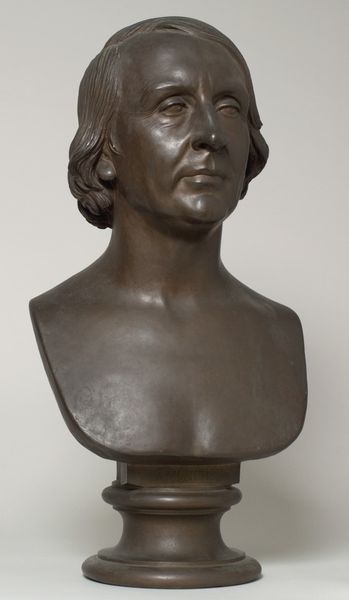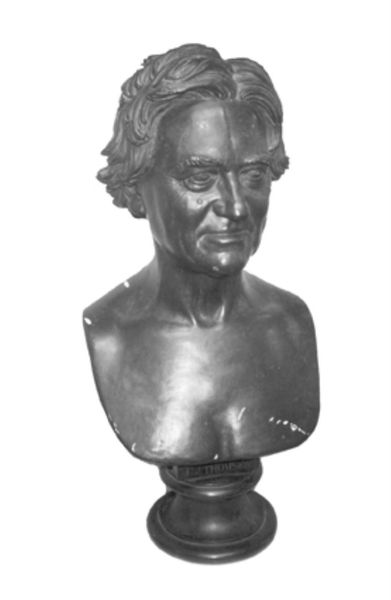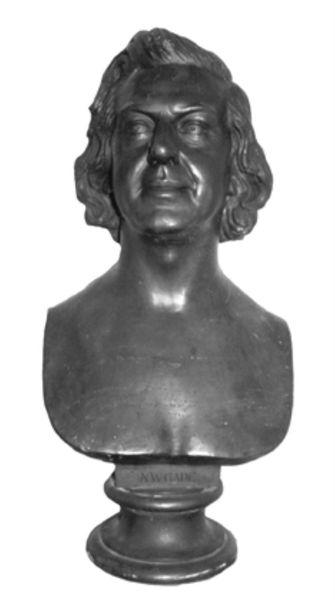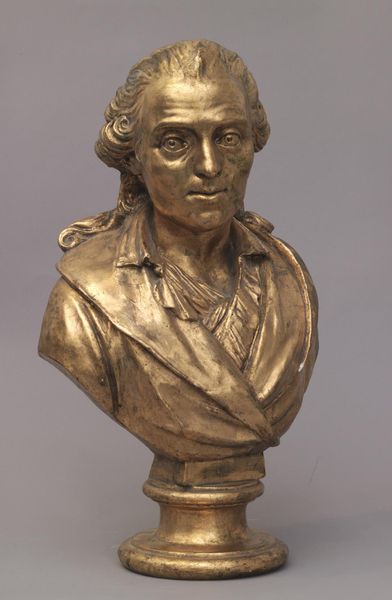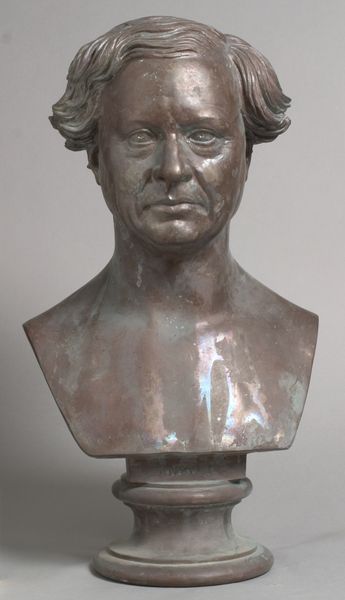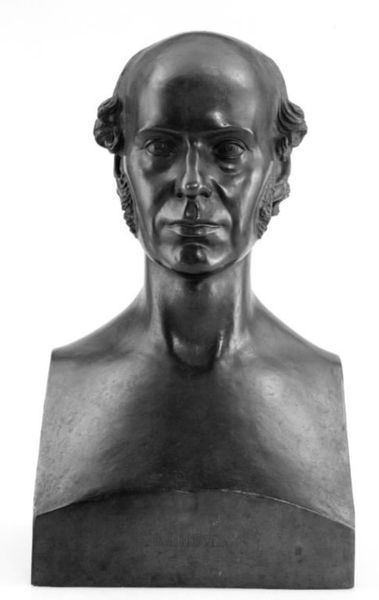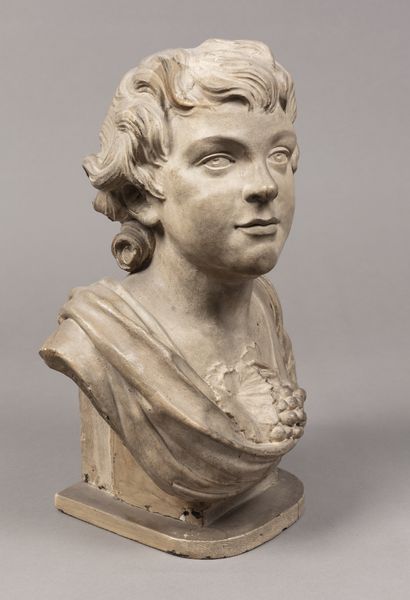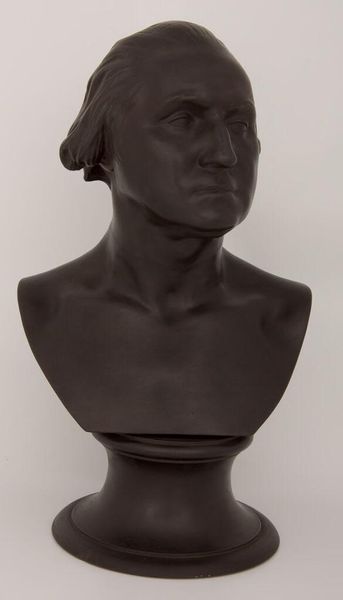
sculpture, marble
#
portrait
#
neoclacissism
#
sculpture
#
classical-realism
#
form
#
sculpture
#
marble
Dimensions: 66 cm (height) (netto)
Curator: This is a marble bust dating from between 1778 and 1782, titled “Digteren Johannes Ewald.” It resides here at the SMK, Statens Museum for Kunst. Editor: He appears rather severe. The artist has skillfully rendered the likeness of a man caught in deep contemplation, almost troubled, despite the clear influence of classical ideals. Curator: Indeed. Carved by Hartman Beeken, this sculpture exemplifies Neoclassical portraiture. Note the restrained emotion, the idealized features. The formal elements echo classical sculpture, emulating perceived virtues of ancient art. Editor: Yet, that restraint seems… telling. It almost suggests that Neoclassicism in this case served as a veil, hiding complex emotions felt by the poet, Ewald, who famously struggled with addiction and unrequited love. Consider, too, the context— late 18th century Denmark was experiencing seismic social and intellectual shifts that must have weighed heavily on prominent figures. Curator: Certainly, but consider how Beeken emphasizes form, and classical proportion. The smooth finish of the marble enhances the sense of idealized perfection, prioritizing symmetry and clarity above revealing any turmoil in his features. The draping is quite formal and carefully modeled, directing your eye back to his carefully composed face. Editor: I'd say that what appears to be perfection is really a calculated move. This controlled representation subtly mirrors Ewald’s turbulent relationship with the rigid social structures of his time, revealing an undercurrent of tension beneath a veneer of respectability. Curator: I would argue that interpretation requires evidence that doesn’t emerge simply from analyzing the formal attributes of the work itself. I remain firmly focused on the sculptor's conscious artistic decisions concerning technique and form. Editor: And I insist that by acknowledging the wider socio-political world the artist inhabited, the statue transcends simple aesthetics to resonate profoundly with issues of identity and resistance against oppression in every era. Curator: Ultimately, the success of Beeken’s sculptural command provides an immutable reference for artists seeking to reconcile the boundaries of form with ideal representation. Editor: Perhaps, it also serves to show us the many ways a marble exterior can mask the tumultuous battles raging within the soul.
Comments
No comments
Be the first to comment and join the conversation on the ultimate creative platform.
